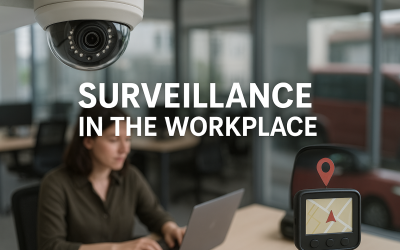Understanding the Implications for Businesses
In a significant move aimed at addressing modern workplace dynamics, the Federal Government recently passed the Fair Work Legislation Amendment (Closing Loopholes) Bill No 2 2024, ushering in several reforms. Among these reforms, one that stands out is the establishment of the ‘right’ for employees to ‘disconnect’ outside of their designated working hours. This legislative change has profound implications for businesses across various sectors and necessitates a comprehensive understanding of its nuances.
Deconstructing the ‘Right’ to Disconnect:
The term ‘disconnect’ may seem straightforward at first glance, suggesting a complete disengagement from work-related communications. However, the legislation’s intent is more nuanced, offering employees the prerogative to ‘refuse’ or ‘ignore’ contact outside of their prescribed working hours. This newfound right empowers employees to exercise control over their work-life balance, safeguarding against the encroachment of work into personal time.
Key Provisions and Considerations:
Delving into the specifics of the legislation reveals several key provisions and considerations that businesses need to be cognizant of:
- Scope of the Right: The right to disconnect encompasses various forms of communication, including phone calls, emails, and texts, originating from both employers and third parties such as clients or customers. Employees are entitled to decline monitoring, reading, or responding to such communications during their off-hours.
- Reasonableness Clause: While the legislation grants employees the right to disconnect, it also incorporates a reasonableness clause. This clause stipulates that employees cannot unreasonably refuse contact outside of working hours. Determining what constitutes ‘unreasonable’ behaviour requires careful consideration of factors such as the purpose and method of contact, the level of disruption caused, the employee’s role and responsibilities, and their personal circumstances.
- Dispute Resolution Mechanisms: In the event of disputes arising from the exercise of the right to disconnect, the legislation outlines a structured resolution process. Disputes must first be addressed at the workplace level, with parties encouraged to engage in constructive dialogue. Should disputes remain unresolved, either party has the option to seek recourse through the Fair Work Commission, which holds the authority to issue appropriate orders.
- Commencement and Implications: The legislation is slated to come into effect six months after receiving Royal Assent, with small businesses granted an additional 18-month transition period. This timeline underscores the need for businesses to promptly assess their existing practices and policies regarding after-hours communication and make necessary adjustments to ensure compliance.
Navigating Potential Challenges:
While the right to disconnect is a welcome development aimed at promoting work-life balance, its implementation may pose challenges for businesses, particularly in certain industries. For instance, industries characterised by round-the-clock operations or time-sensitive deliverables may need to reassess their communication protocols and expectations.
Moreover, businesses must anticipate potential tension points arising from the application of the reasonableness clause, especially in scenarios involving critical deadlines or urgent client demands. Proactive measures, such as establishing clear guidelines and communication channels, can help mitigate conflicts and ensure smooth implementation of the legislation.
Practical Steps for Businesses:
In light of these legislative changes, businesses are encouraged to take proactive steps to ensure compliance and foster a supportive work environment:
- Conduct a comprehensive review of existing policies and practices related to after-hours communication.
- Engage in dialogue with employees to understand their preferences and concerns regarding work-life balance.
- Educate managers and employees on the provisions of the legislation and their rights and responsibilities.
- Consider implementing clear guidelines or policies outlining expectations for after-hours communication, including acceptable methods and response times.
- Provide training and support to managers on effective communication and workload management strategies.
- Establish mechanisms for addressing grievances or disputes related to after-hours communication in a fair and transparent manner.
By taking proactive measures and fostering open communication, businesses can navigate the complexities of the right to disconnect legislation effectively while promoting a healthy work-life balance for their employees.
In conclusion, the right to disconnect represents a significant milestone in the evolution of workplace legislation, underscoring the importance of respecting employees’ personal time and well-being. By embracing this paradigm shift and implementing appropriate measures, businesses can cultivate a culture of mutual respect, productivity, and employee satisfaction in the modern workplace landscape.




